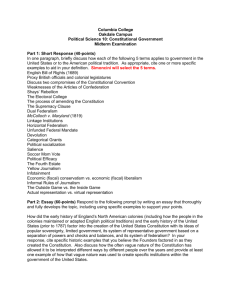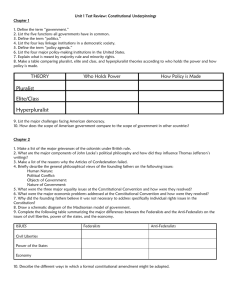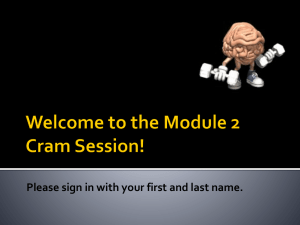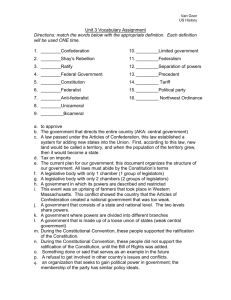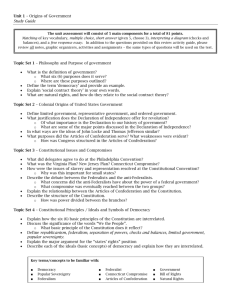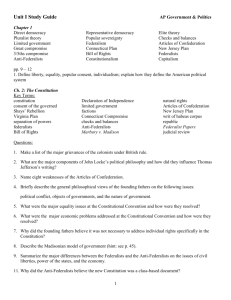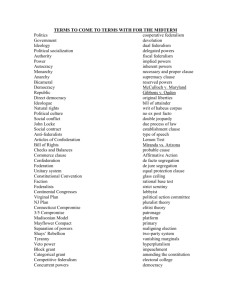1301 American Government | Study Guide
advertisement
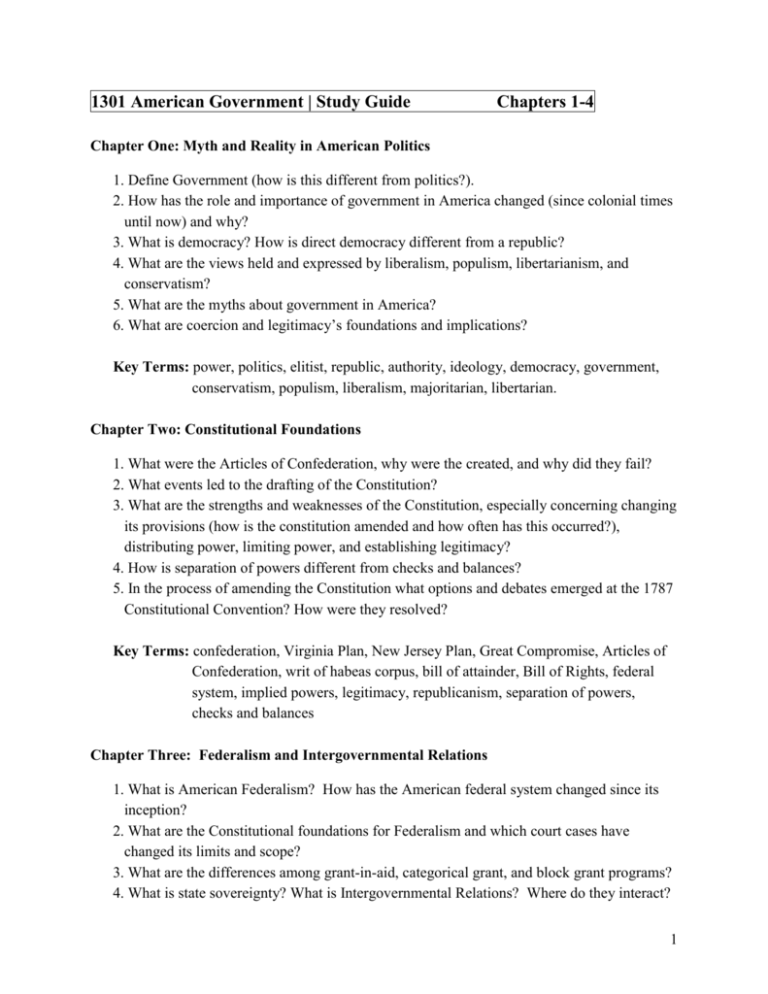
1301 American Government | Study Guide Chapters 1-4 Chapter One: Myth and Reality in American Politics 1. Define Government (how is this different from politics?). 2. How has the role and importance of government in America changed (since colonial times until now) and why? 3. What is democracy? How is direct democracy different from a republic? 4. What are the views held and expressed by liberalism, populism, libertarianism, and conservatism? 5. What are the myths about government in America? 6. What are coercion and legitimacy’s foundations and implications? Key Terms: power, politics, elitist, republic, authority, ideology, democracy, government, conservatism, populism, liberalism, majoritarian, libertarian. Chapter Two: Constitutional Foundations 1. What were the Articles of Confederation, why were the created, and why did they fail? 2. What events led to the drafting of the Constitution? 3. What are the strengths and weaknesses of the Constitution, especially concerning changing its provisions (how is the constitution amended and how often has this occurred?), distributing power, limiting power, and establishing legitimacy? 4. How is separation of powers different from checks and balances? 5. In the process of amending the Constitution what options and debates emerged at the 1787 Constitutional Convention? How were they resolved? Key Terms: confederation, Virginia Plan, New Jersey Plan, Great Compromise, Articles of Confederation, writ of habeas corpus, bill of attainder, Bill of Rights, federal system, implied powers, legitimacy, republicanism, separation of powers, checks and balances Chapter Three: Federalism and Intergovernmental Relations 1. What is American Federalism? How has the American federal system changed since its inception? 2. What are the Constitutional foundations for Federalism and which court cases have changed its limits and scope? 3. What are the differences among grant-in-aid, categorical grant, and block grant programs? 4. What is state sovereignty? What is Intergovernmental Relations? Where do they interact? 1 5. How do local governments play into Federalism? What Constitutional guidelines or powers are given to local governments? 6. What and where is the supremacy clause in the Constitution? Key Terms: devolution, unfunded mandates, McCulloch v. Maryland, dual federalism, cooperative federalism, block grants, categorical grants Chapter Four: The Heritage of Rights and Liberties 1. Compare and contrast civil liberties versus civil rights. 2. What is the Bill of Rights? What are its components and provisions? How has its scope changed through incorporation? 3. What are the limits and tests of each of the freedoms guaranteed in the First Amendment? 4. What Supreme Court cases have changed the scope of rights for minorities and women? 5. What are poll taxes and literacy tests and are they still used? 6. What is the writ of habeas corpus? Key Terms: civil rights, civil liberties, incorporation, first 10 amendments, 14th amendment, Voting Rights Act of 1965, Civil Rights Act of 1964, libel. 2
